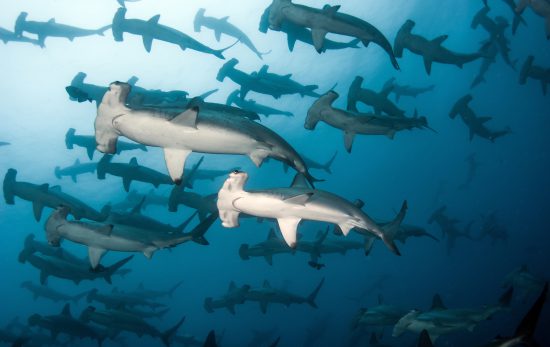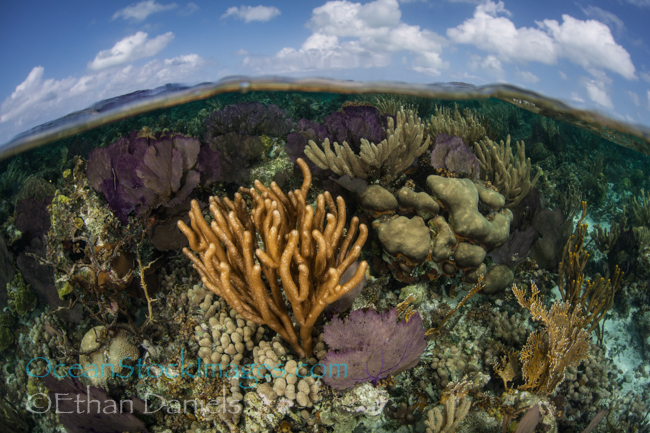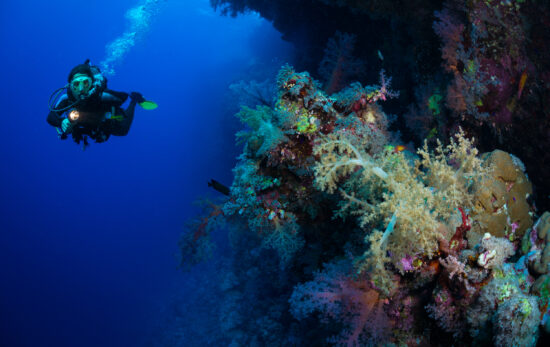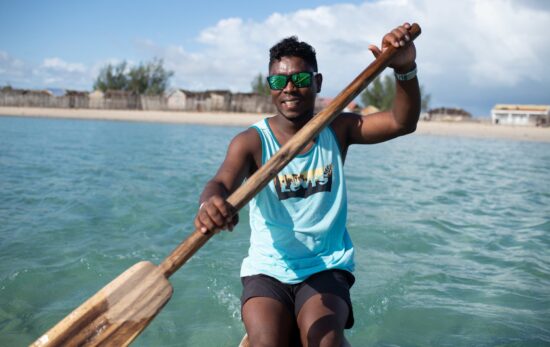Woken by a distant crack of thunder, I emerged from my tent as spittle’s of rain drizzled on its green fly. The sun was well risen but barely visible above an expanse of grey that rolled and then merged at an equally murky horizon. Lake Malawi is the third biggest in Africa. It is known as the calendar lake: 365 miles long; 52 miles wide; and with twelve rivers running into it, roughly.
Shortly after a coffee and waffles, a motorised skiff approached the shore and I was greeted by Craig, a local with American roots who would be my guide for the day. We discussed our plans and geared up. We wouldn’t be going too deep – the nearest recompression chamber is in Pretoria, South Africa. This wasn’t an issue as most of the Cichlid fish populate shallower waters, and it is here that their remarkable colours can be seen in the flickering sunlight. These are the creatures that had lured me to Lake Malawi.

The lake is the most biodiverse on the planet
The lake is the most biodiverse on the planet, and home to around 700 of the 1600 known Cichlid species. The Cichlid family can be found throughout Africa and South America. These small colourful fish possess a number of unique traits that have enabled them to occupy a variety of ecological niches. They exhibit a huge range of peculiar structural adaptations and bizarre feeding behaviours, as well as territorial aggression and mimicry. They are a prime example of speciation for biologists and a true spectacle to anyone that delves below the surface with a dive mask.
An inhale, roll and a plunge, and we were beneath the murky horizon. Looking down, circles began to appear in the sand. I blinked and they were still there. These crop circles of the lake bed materialised into crater-like holes that stretched 1-3m across and were shaped as though spun on a potter’s wheel. However, they were neither the work of extra-terrestrials or potters, and the skilled engineer that had designed them soon revealed himself skimming in and out of his creation. He was blue and about the size of my hand: a male mouth brooding Cichlid. He builds and perfects the nest to attract a female with whom to mate. Eggs are laid and inseminated in the nest, and the female takes them elsewhere for brooding.
Her young were under attack. The scene dissolved in a flurry of sand
A commotion caught our attention, and we looked to see the female mouth brooder flitting around desperately. Her young were under attack. The scene dissolved in a flurry of sand, whisked up as she tried frantically to capture each of them in the nursery that is her mouth. Swallowing your offspring is certainly a good way of keeping tabs on them without paying for a babysitter!
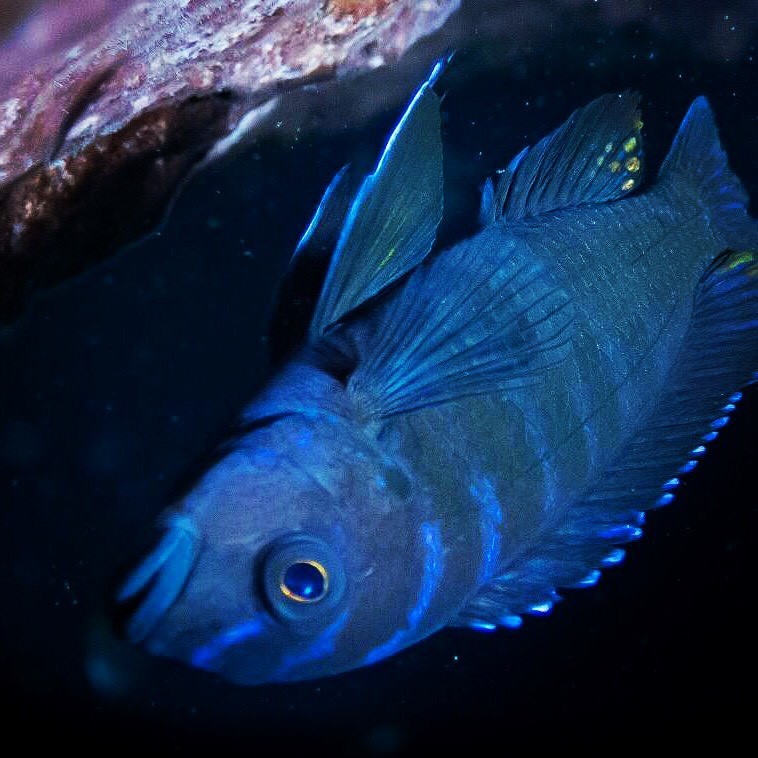
Perhaps the most unique of feeding behaviours among Cichlids are those that feed on the underside of rocks. Like many Cichlid species they feed on algae, but these unique animals take advantage of food that is inaccessible to their upright cousins. You would be right to think that an upside down fish is usually a bad sign, but these small dark cichlids have gone through natural selection and come out the other end the wrong way up – or the right way, depending on who’s point of view you are coming from.
The remainder of the dive took us between colossal boulders and through narrow crevices and tunnels. There was not a moment that we weren’t surrounded by an abundance of colour created by the huge numbers of Cichlids. We left the wonders of the morning behind as we rose again to the surface. The air had stilled and the water calmed.
lightning over Mozambique made the clouds flash with pink hues
Shortly before sunset Craig appeared again on the little red boat. The sky glowed red, and lightning over Mozambique made the clouds flash with pink hues. The water of Lake Malawi had darkened to ink and we cut through it to the site of our night dive. Back in the depth of the lake, our eyes followed the beams of the torches. Everything above and below was unknown and masked by darkness. Life at night was totally different as crabs lurked behind rocks and many of the fish we had seen during the day were gone. The female mouthbrooder now had her young well and truly tucked in for the night.
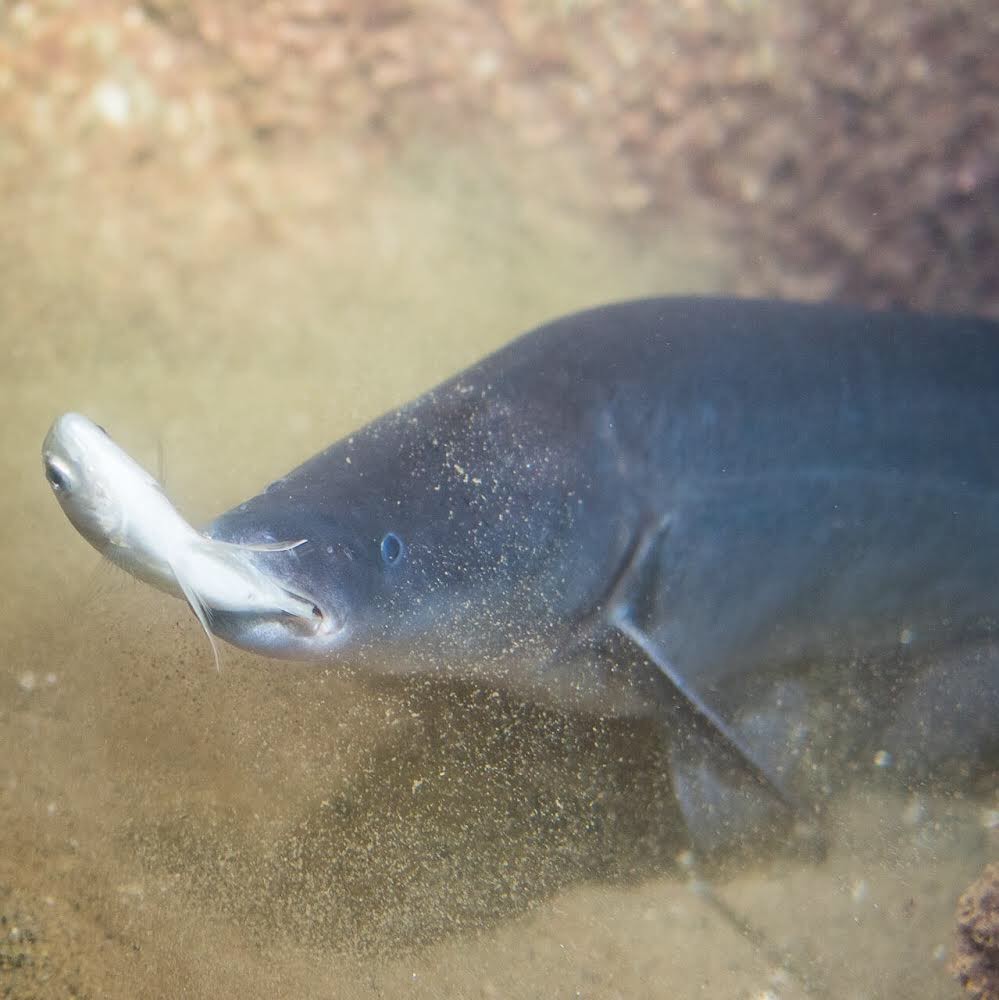
They hunt in packs by night, emitting electric pulses from an organ in their tails to detect prey
Moving between the rocks and cracks we were joined by a growing crowd of dolphin fish. I had heard these fish described as looking as much like a dolphin as a loaf of bread, and it wasn’t a poor description. Comparable in shape to a freshwater pike, they are dark in colour with beady eyes set atop their flattened heads. They hunt in packs by night, emitting electric pulses from an organ in their tails to detect prey. As our torches startled the cichlids around us, they made fatal movements through the water. Our swimming must have set the dolphin fishes’ brains (which happen to have a similar body weight ratio to humans) on overdrive. They took the opportunity for an easy hunt and joined us, multiplying in numbers as the dive went on.
Earlier in the day we had squeezed through tight crevices in the rock. Now they were inhabited by creatures of the night. Shining my torch into a deep crack, I was met by two silver beady eyes. The huge catfish skulked from within its rocky lair, swimming regally amidst the chaos of the hunt and into the darkness of the open water.
Breaking the surface, we were greeted by the sound of the waves lapping against the boat, gentler now than they had been in the morning. It was just as dark here as it had been below, but the glistening abundance of cichlids had been replaced by a congregation of stars. Out on the water the lights of fishermen’s canoes lured their catch towards a false moon and onto the drying racks of the shore. They sat between the glistening sky and the celestial reflections of the glossy lake surface, merging into the expanse that is Malawi’s ‘Lake of Stars’.
If this post has inspired you to dive in Malawi, find PADI dive shops here using the Dive Shop Locator.
About the Author
Alex McMaster grew up on the rugged west coast of Ireland where the sea, mountains and forests cultivated his love for the wild. When these had been explored, he was drawn away on sailing expeditions in Oceania, Europe and the Arctic. Whether on the high seas or a trans-continental bike ride, he always has a dive mask to hand to find out what lies below the surface of a place. That ethos extends to his desire to know the intricacies of each point and person that he encounters on his journeys. Alex lives in Scotland, where he is a student.

